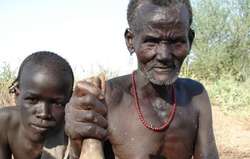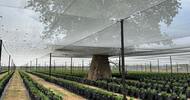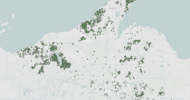Africa Intelligence Media| 11 March 2015
 Donors warn Ethiopia of Omo conflict risk from rapid sugar plans
Donors warn Ethiopia of Omo conflict risk from rapid sugar plans
By William Davison
Development of the Ethiopian sugar industry in South Omo that will bring in migrant laborers may exacerbate conflict in the ethnically diverse region, according to the U.S. aid agency and other donors.
The state-owned Ethiopian Sugar Corp. is tapping loans from the Development Bank of China to build six sugar-processing factories and plant 150,000 hectares (370,700 acres) of sugarcane in the region bordering Kenya. It’s part of a plan for Ethiopia, Africa’s most-populated nation after Nigeria, to turn from net importer to exporter of the sweetener, and eventually become one of the top 10 sellers globally.
Farming of the crop may disrupt the traditional lifestyle of pastoralists native to the area, while the arrival of “hundreds of thousands of migrant workers” may fan ethnic tensions, the 27-member Development Assistance Group said in a statement on Wednesday. The area is populated by at least eight ethnic communities, including the livestock-rearing Bodi and Mursi groups.
“This, as well as the rapid pace for planned development, may significantly increase the chances of the risk of conflict, as the Bodi and Mursi are increasingly exposed to external influences, and could lead — if not handled properly — to destabilization,” according to the donors.
Officials with the Development Assistance Group visited South Omo in August, the most recent of several trips over the past three years to assess a government resettlement program that is being implemented alongside the sugar schemes.
Forced Resettlement
Advocacy groups such as New York-based Human Rights Watch say the initiatives in South Omo involve systemic abuses, including the forced relocation of people from their ancestral property. The donor group said it found no evidence of people being compelled to move in the areas they visited.
Development in South Omo is aimed at preventing conflict and the community has been widely consulted about the plans, Federal Affairs Minister Shiferaw Teklemariam said in a phone
interview from the capital, Addis Ababa, on Wednesday.
South Omo is a remote, mostly low-lying area populated by about 200,000 people who have experienced bouts of conflict caused by resource competition and cattle raiding.
Changes in the environment caused by sugar development may affect beekeeping, cattle herding and crop growing, activities which local residents depend on for their livelihoods, the donors said.
One of the biggest concerns for the Mursi and Bodi communities is accessing grazing land, said the group of donors, which also includes European nations, India, the United Nations, African Development Bank and Turkish aid agency.
Residents say they are concerned they will lose pasture and fertile land once the flow of the Omo river is regulated by the Gibe III hydroelectric dam.
The government should increase transparency about the sugar projects, listen better to the communities and consider slowing the pace of change to “allow a softer transition, avoiding
conflict,” the donors said.

The Kwegu in Ethiopia's Lower Omo Valley are starving because of the destruction of their forest and the slow death of the Omo river. Photo: Survival International
By William Davison
Development of the Ethiopian sugar industry in South Omo that will bring in migrant laborers may exacerbate conflict in the ethnically diverse region, according to the U.S. aid agency and other donors.
The state-owned Ethiopian Sugar Corp. is tapping loans from the Development Bank of China to build six sugar-processing factories and plant 150,000 hectares (370,700 acres) of sugarcane in the region bordering Kenya. It’s part of a plan for Ethiopia, Africa’s most-populated nation after Nigeria, to turn from net importer to exporter of the sweetener, and eventually become one of the top 10 sellers globally.
Farming of the crop may disrupt the traditional lifestyle of pastoralists native to the area, while the arrival of “hundreds of thousands of migrant workers” may fan ethnic tensions, the 27-member Development Assistance Group said in a statement on Wednesday. The area is populated by at least eight ethnic communities, including the livestock-rearing Bodi and Mursi groups.
“This, as well as the rapid pace for planned development, may significantly increase the chances of the risk of conflict, as the Bodi and Mursi are increasingly exposed to external influences, and could lead — if not handled properly — to destabilization,” according to the donors.
Officials with the Development Assistance Group visited South Omo in August, the most recent of several trips over the past three years to assess a government resettlement program that is being implemented alongside the sugar schemes.
Forced Resettlement
Advocacy groups such as New York-based Human Rights Watch say the initiatives in South Omo involve systemic abuses, including the forced relocation of people from their ancestral property. The donor group said it found no evidence of people being compelled to move in the areas they visited.
Development in South Omo is aimed at preventing conflict and the community has been widely consulted about the plans, Federal Affairs Minister Shiferaw Teklemariam said in a phone
interview from the capital, Addis Ababa, on Wednesday.
South Omo is a remote, mostly low-lying area populated by about 200,000 people who have experienced bouts of conflict caused by resource competition and cattle raiding.
Changes in the environment caused by sugar development may affect beekeeping, cattle herding and crop growing, activities which local residents depend on for their livelihoods, the donors said.
One of the biggest concerns for the Mursi and Bodi communities is accessing grazing land, said the group of donors, which also includes European nations, India, the United Nations, African Development Bank and Turkish aid agency.
Residents say they are concerned they will lose pasture and fertile land once the flow of the Omo river is regulated by the Gibe III hydroelectric dam.
The government should increase transparency about the sugar projects, listen better to the communities and consider slowing the pace of change to “allow a softer transition, avoiding
conflict,” the donors said.













